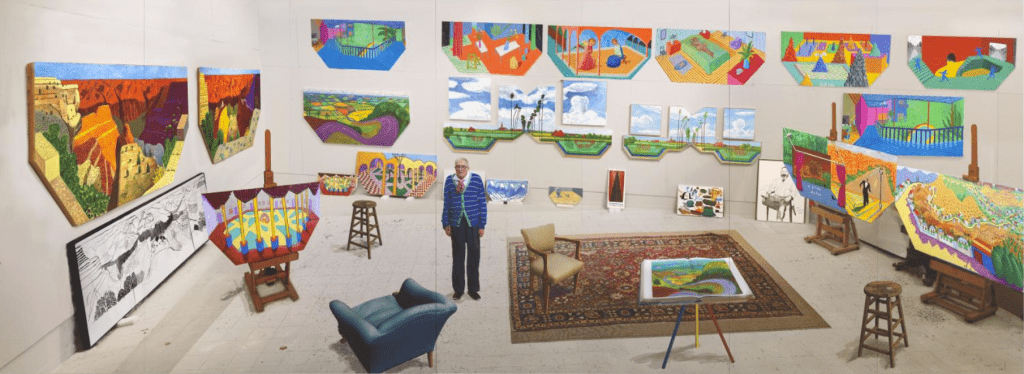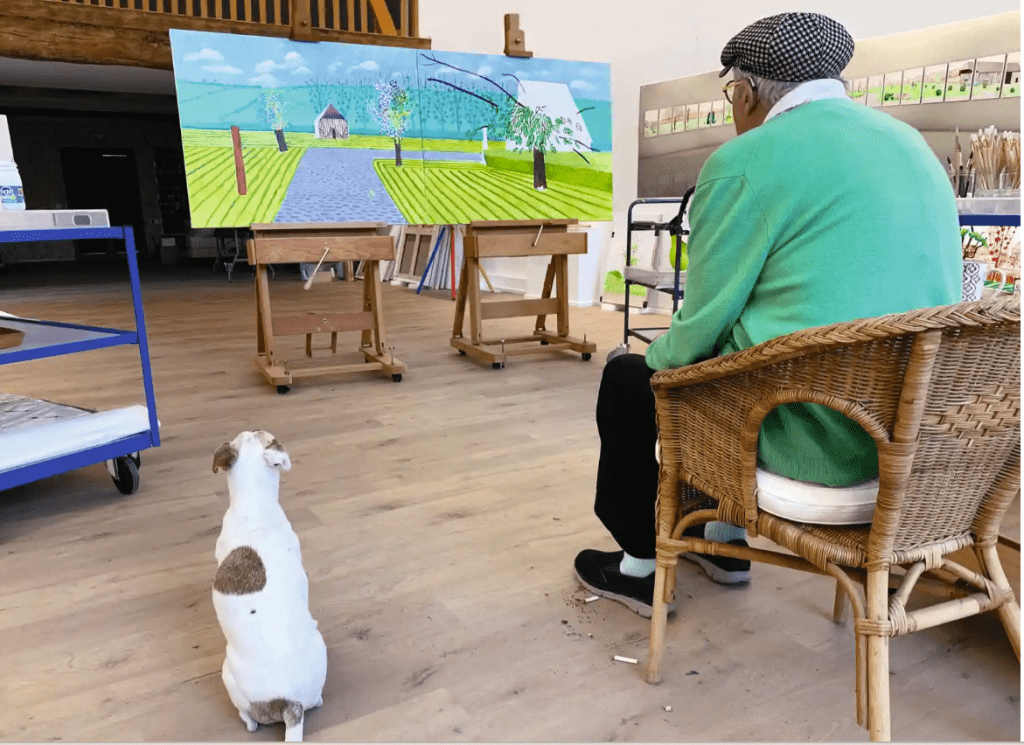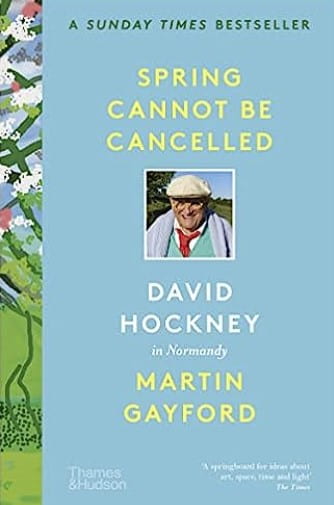This book is an on-going conversation between two friends about life and art – specifically the art of David Hockney but also his inspirations such as Picasso, during COVID lockdowns. There was so much I didn’t know about Hockney and his way of working although I did know that he smoked a lot. There were lots of things I enjoyed about this book but number one enjoyment was his engagement with nature and works based on Spring around his house in Normandy.
I know from teaching children that one of things we do to help explore is write/paint/dance in the style of an artist but so do artists.
I’ve done a picture of the pond à la Monet. Just now, I was doing the surface of the water. Since March, I’ve done at least one drawing a day, often two, sometimes almost three. That’s an average of more than one a day. I don’t even take a nap in the afternoon, because I get a lot of energy from work, a lot of energy. It’s gorgeous everywhere I look.
When you are really painting, you can get out of yourself, which is, after all, the highest thing most people feel they can do. I think that’s true. Sometimes when I’m drawing away on the ipad, it’s like that. I don’t care how long it’s taking; I don’t realise what time is at all. I’m often like that.
p201-202
How I hope to feel like that at 83.
Perspective is referred to a lot during Hockney and Gayford’s discussions with Gayford drawing in other resources to discuss this element of the paintings. Hockney had been exploring having more than one vanishing point in his pictures and so together they discussed ‘reverse perspective’ in Russian iconography where the eye is looking at different parts while changing it’s position. In the video clip below Hockney points out the varying ‘points of view’ or persepctive in a painting.
And in his own work, In the Studio, December 2017, 2017 Hockney is surrounded by a cycle of paintings each of which has many perspectives and each object in the studio has its own perspective. I spent ages looking for the persepctive of each object.

Other works where Hockney was explores point of view are his photo collage works, some of which can be seen here. They show clearly the different perspectives although I do find the portraits quite hard to look at and don’t know where to focus my eyes. Is that the point?
The book shows us on several occasions that Hockney works by looking at his own paintings for considerable lengths of time after he has finished them. This is his thinking and reflection time, aided by a cigarette, and the photograph I loved the most was taken in his studio with Ruby his dog by Jean-Pierre Gonçalves de Lima. Did they plan the green of Hockney’s jumper – spring green- or was it just fortuitous?

The work I enjoyed the most was Autour de la Maison, Printemps parts of which can be seen here. It is created on sheets of folded paper making a booklet like those we make in school and presumably each image is made by turning a few degrees. I love it and might even try it on our house.
Other elements that are worth exploring in this book are time, as referred to in the first quote, and to mark-making such as lines and dots along with his use of technology.
An absolutely fantastic book which has gone up to 5 out of 5 as I write this review rather than the 3.5 – 4 stars I was going to give it.
